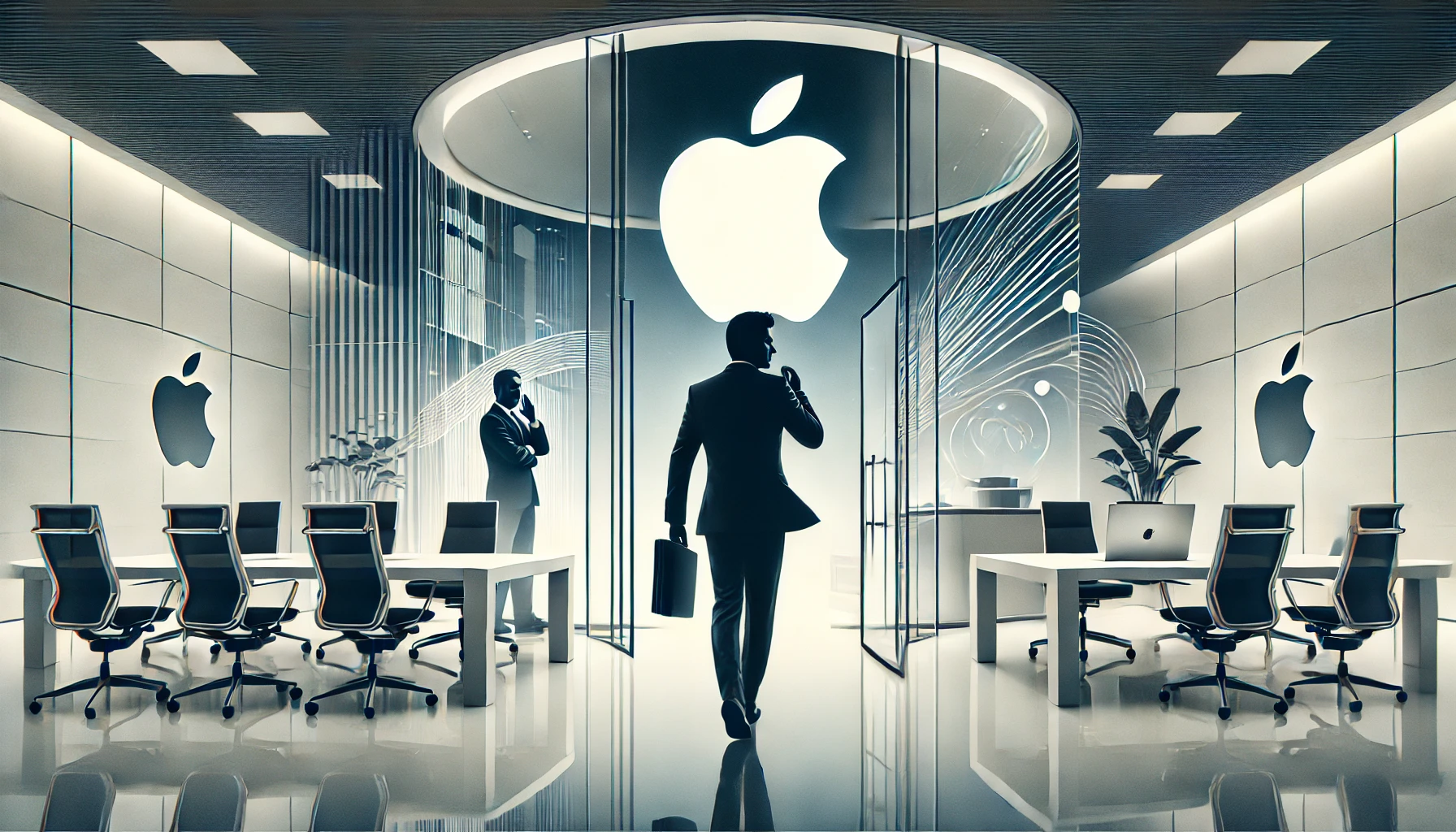Leadership Shifts at Apple: What Carol Surface’s Departure Means for Tim Cook’s Executive Team
In the ever-evolving landscape of technology, leadership plays a pivotal role in steering companies toward success. At Apple, leadership changes often signal major shifts within the organization, impacting everything from talent management to innovation. The recent announcement of Apple’s Chief People Officer Carol Surface leaving the company after less than two years has raised questions about the company’s leadership strategy and its impact on the workforce. As Tim Cook’s executive team faces this departure, it’s essential to understand the broader implications of this change.
This blog will explore Carol Surface’s departure, its potential impact on Apple’s leadership team, and the future of the Apple People team and HR leadership. We’ll also look into how this transition may affect talent development within the company.
Who is Carol Surface? A Brief Overview of Apple’s Chief People Officer
Before joining Apple, Carol Surface had an illustrious career in human resources, holding leadership roles at companies like Medtronic and Best Buy. With a doctorate in Industrial and Organizational Psychology, Surface was well-equipped to take on the role of Chief People Officer at Apple in 2023
. Her leadership spanned talent development, employee experience, recruiting, and inclusion and diversity. Reporting directly to Tim Cook, Surface was responsible for ensuring the growth and development of Apple’s workforce.
Despite her vast experience, Carol Surface’s departure from Apple’s Chief People Officer role after less than two years has sparked speculation about what may have led to this sudden exit.
Understanding the Impact on Tim Cook’s Executive Team
Tim Cook’s executive team has long been a symbol of stability, with many key executives remaining in their roles for extended periods. However, Apple executive exits have become more frequent in recent years, raising questions about leadership continuity. Surface’s exit marks the latest in a series of high-profile departures, following other executives who have left Apple after relatively short tenures
The departure of Carol Surface from the HR leadership team at Apple is particularly significant because of the timing. Apple is navigating a complex landscape in which talent acquisition and retention are more critical than ever. The Apple People team is tasked with ensuring the company maintains its competitive edge by attracting top talent while fostering a culture of innovation and inclusion.
Key Impacts on Tim Cook’s Team:
- Loss of experience: Surface brought over two decades of HR expertise, which will be challenging to replace.
- HR leadership gap: Apple must quickly fill this gap to maintain continuity in talent management and employee experience.
- Potential culture shift: Changes in leadership often lead to shifts in company culture, particularly within HR.
Why Executive Exits Are Increasing at Apple
Apple has long been known for its high retention of senior executives, with many of Tim Cook’s closest colleagues having served the company for years. However, the trend of Apple executive turnover has been growing. While the reasons for Carol Surface’s departure remain unclear, some speculate that the increased pressure on HR teams to manage a hybrid workforce, maintain productivity, and meet diversity goals may have played a role
With Apple executive exits on the rise, it’s worth considering how leadership transitions could affect the company’s trajectory. As key members of Tim Cook’s executive team leave, Apple must navigate the challenge of finding leaders who align with its vision while ensuring minimal disruption to operations.
Apple’s Talent Development and the Role of HR Leadership
One of Carol Surface’s primary responsibilities was overseeing Apple talent development. This aspect of HR leadership is crucial for a company like Apple, which thrives on innovation and requires a continuous influx of new ideas and skills. Under her leadership, Apple’s People team was focused on not only recruiting top talent but also ensuring that employees had opportunities to grow and develop within the company
Key Areas of Focus for Talent Development:
- Apple University: Surface’s team was instrumental in fostering leadership and talent development through programs like Apple University, designed to shape the next generation of Apple leaders.
- Inclusion and diversity: Under Surface’s leadership, Apple continued to push its inclusion and diversity agenda, aiming to create a more representative workforce.
- Employee experience: Improving the overall employee experience remained a core objective, ensuring that Apple continued to be seen as a desirable place to work
Surface’s exit leaves a gap in Apple’s HR leadership, and it remains to be seen how the company will continue its focus on talent development and employee experience.
Leadership Changes and Their Broader Impact on Apple’s Future
As Apple faces increasing competition in the global tech market, leadership continuity is more important than ever. Apple leadership changes, like Carol Surface’s departure, can affect not only the company’s internal operations but also its public perception. Investors and stakeholders watch executive transitions closely, as they can signal changes in company strategy or internal challenges
Additionally, Apple executive turnover could impact how employees feel about the company’s direction. High turnover in leadership roles, especially in HR, may create uncertainty within the workforce, leading to concerns about stability, talent management, and the company’s commitment to its core values.
Key Impacts of Leadership Turnover:
- Potential productivity dip: Leadership changes can disrupt workflows and decision-making processes, leading to potential short-term productivity losses.
- Employee morale: Frequent changes in leadership could affect employee morale, especially if employees feel uncertain about the company’s direction.
- Talent retention: If the new leadership team cannot maintain the same level of engagement and development opportunities, Apple may face challenges in retaining top talent
Navigating the Future Without Carol Surface
In the wake of Carol Surface’s departure, Apple must focus on filling the gap in its HR leadership team quickly and effectively. Finding a new Chief People Officer who can uphold the company’s standards for innovation, inclusion, and employee development will be essential to maintaining Apple’s competitive edge.
While Apple has weathered leadership changes in the past, the growing trend of Apple executive exits suggests that the company must carefully manage its talent pipeline to ensure stability. Tim Cook’s executive team will need to find the right balance between maintaining continuity and bringing in fresh leadership that can navigate the challenges of a rapidly changing tech landscape
What Carol Surface’s Departure Means for Apple
The departure of Carol Surface from Apple’s Chief People Officer role marks a significant shift within Tim Cook’s executive team. As Apple continues to lead the tech industry, maintaining strong HR leadership and focusing on talent development will be critical to its success. Apple’s People team plays a vital role in ensuring the company can attract and retain the best talent, and leadership changes in this area are bound to have far-reaching impacts.
With growing executive turnover and increased pressure on companies to foster inclusive, innovative work environments, Apple must navigate this transition carefully. As the company looks ahead, ensuring that its HR leadership remains strong will be crucial for maintaining its position as a global tech leader.
For more insights into leadership changes, talent development, and corporate strategy, visit Regent Studies.




